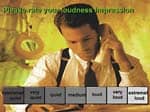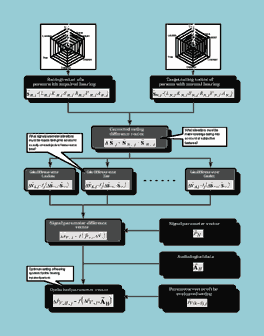Hearing aids have the potential to serve as microphone amplifiers as well as hassle-free, inconspicuous, in-the-ear loudspeakers for broadcasting sound. As more and more people experience telecoil-facilitated binaural broadcasts—by PA systems, televisions, stereos, and telephones—the stigma of visible hearing aids will diminish, as will their return rates, while the demand for hearing aids will increase. This article, from a consumer and hearing health care advocate, provides a perspective on why hearing care professionals should help “loop” America.
When I purchased my ITE aids 3 years ago, I knew very little about telecoils. But thanks to my benevolent audiologist, I learned that they could help with telephone listening, especially in noisy surroundings where the “t” setting also served to block surrounding sound. But this small benefit hardly prepared me for what I was to experience on my recent sojourn in Britain.
There, in venue after venue—churches, cathedrals, lecture halls, a symphony hall, even (on my most recent visits there) designated grocery store checkout lanes, post office windows, and tourist information counters—I discovered that a simple push of the “t” button transformed my hearing aids into dual-purpose loudspeakers. Suddenly, without the hassle and embarrassment of a clunky assistive listening device, I could hear a speaker’s voice or a musician’s instrument as if it were broadcasting from the center of my head. The foggy sound that had been reaching me after bouncing off walls was now heard as if my ears were located in the microphone.
Other Americans have likewise had this ear-expanding experience in Europe. Robert Brown, past president of the Williamsburg, Va, chapter of Self-Help for Hard of Hearing People, recalls visiting York Cathedral in England. “My wife and I sat in one of the back pews and could just barely hear sounds from the service,” he relates. “When I switched on my t-switches, I could hear perfectly.”
Britain is en route to joining the Scandinavian countries in broadcasting sound directly to nearly all hearing aids. Its National Health Services includes telecoils in the hearing aids it provides, and the UK Disability Discrimination Act decrees that, by the end of 2004, “Any business or organization providing a product or service to the general public must have an Induction Loop System fitted wherever information is verbally provided.”
Additional Benefits
My next step was to bring the technology into my home. I connected a loop amplifier to my television, dropped the wire into the basement below, and stapled a loop to the ceiling studs beneath my seating area. My television now broadcasts sound, customized by my hearing aids, at a volume level of my choosing—directly through my in-the-ear loudspeakers. There is no hassle, no external equipment, and the sound is terrific. Moreover, the M/T setting provided by my audiologist allows me to also have conversations with my wife during a broadcast, without having to remove a headset. This is much better than my old infra-red ALD, which now sits unused in a basket.
So if this can be done with television, why not the telephone? My volume- and frequency-controllable phone is helpful, but not nearly so helpful as the binaural phone input I now receive through my office loop. “If all people with hearing loss could experience this dramatic improvement in phone conversation,” I told the manufacturer recently, “you could easily sell a million of these.”

Given how effectively loop systems work throughout Scandinavia and Britain, and in my own home and office, why not, I thought, make my own community—Holland, Mich—a model looped community here in the US? With support from two local corporations and a family foundation that offered to pay 40% of the equipment and installation costs to churches and other nonprofit institutions—we announced a community loop initiative. Aided by newspaper, TV, and radio publicity—and with the support of our local hearing care professionals—more than 160 people attended last January’s launch meeting held at Holland’s first looped facility—its senior citizen center auditorium.
In little more than 6 months, 48 public facilities have been looped. Hard of hearing visitors to most of our major churches, city council chambers, library auditorium, various senior citizen and community center facilities, and two funeral homes can now enjoy sound broadcast through their hearing aids. Soon the Gothic chapel, two theaters, and major auditoriums at Holland’s Hope College will also be looped. But the even greater potential lies where people spend more of their time—in their homes. Sure enough, more and more of our people are now purchasing or arranging for the installation of home loop systems.
And month by month, more people are accessing the improved sound. With loop installations in place, our hearing care professionals are now equipping their patients with t-coils. And with people increasingly understanding, using, and expecting loop systems—and telling their friends about their experiences—we have positive momentum that is now spreading with installations elsewhere in west Michigan.
Greater Hearing Utility
Our community’s experience is identical to that of Mark Ross (see previous article, page 22), as he helped equip synagogues with existing assistive listening systems that require people to obtain, wear, and return receiver/ headset units.
In Ross’ opinion, too many ALD systems sit unused in closets. Self-Help for Hard of Hearing People past president Susan Matt tells me the same is true at her synagogue, where she is the sole user of the available system. At my church last winter, one person made use of our portable headsets. Because all the other hard of hearing people did not bother or did not want to suffer the embarrassment, all the other ALDs sat in the closet. Ditto for our local movie theater, which acknowledged that its FM headsets only get checked out about once per month per theater. At a 20-screen complex in Grand Rapids, Mich, a ticket seller told me (inaccurately, I later realized) that they had no assistive listening system.
Within 2 months after my church’s loop system was installed, 10 people were benefiting from the technology—all of them inconspicuously, with the subtle touch of a switch. Anyone else can use the portable receiver and headset that comes with a loop system, as with other assistive listening systems. But few do. Given a chance to vote with their usage patterns, hard of hearing people universally prefer direct broadcast to their hearing aids via loop systems.
And how are people responding? One woman who could have used our old headsets, but did not, reported, “It is actually fun to go to church, and it hasn’t been that way for a long time.” Another person who had been using a headset reported that “the experience of actually hearing such clear sounds was thrilling and hard to describe. One has to experience the improvement. It seemed overwhelming.”
Similar reports are coming in from other churches. One woman, after switching on her telecoil, reported hearing sound “like I hadn’t heard in years.” Another person called to describe his recovery of hearing TV and radio with his new home loop system as “remarkable and phenomenal.”

And what of the supposed barriers—electromagnetic interference, spillover to adjacent rooms, and magnetic energy-sucking steel? Loop technology has improved along with telephones and computers, reports Premovation Audio’s Dick McKinley, a Holland, Mich, audio engineer who has now installed dozens of loop systems. Rarely is interference a problem. (I have switched on my telecoils in all sorts of places; only in airplanes and in some cars would interference preclude a loop system.) Our local systems are being professionally engineered to overcome challenges such as containing sound within adjacent classrooms, theaters, or meeting rooms. Today’s technology also enables a nearly level signal throughout a facility, enabling satisfactory reception wherever one is seated. I am not aware of a venue in our town where satisfactory loop installations have not been possible.
Telephones have also changed, with most now broadcasting to telecoils. Additionally, the new Federal Access Board requirement that 25% of assistive listening devices be telecoil-compatible neckloops guarantees future increased usefulness of telecoils (which in turn will increase demand for loop systems that don’t require neckloops).
Let’s Loop America
With telephones now broadcasting to universally useful telecoils, with European countries and my town exemplifying how we can better serve those with hearing loss, and with affordable home and office loop systems offering everyday assisted listening, why not now take the bigger step and loop America? Why not do as Ross suggests and rename telecoils as broad purpose audiocoils to highlight the potential for hearing aids to serve as customized loudspeakers as well as amplifiers of ambient sound? Why not loop transient venues such as subway kiosks and airport waiting areas, where no other assistive listening system is practical? Why not encourage dispensing professionals to make home loop systems available and to partner with audio firms in their hometowns that can do home installations for those requiring assistance? (Another of our area audiology firms has just distributed a newsletter article promoting home loop systems to 1,000 of its clients.) And why not ask manufacturers, as Ross suggests, to orient the t-coils for optimum loop reception (without having to cock one’s head slightly in some venues)?
Such advances would further endear hearing care professionals to their patients. In a survey of 2001 Self-Help for Hard of Hearing People (SHHH) convention-goers, information about ALDs and telecoils were the top two items that these hard of hearing folks wished their audiologist had given them. Loretta Butler of the Adult Loss of Hearing Association, Tucson, Ariz, reports that, in her city, “Clients are often angry, bewildered, and even tearful when they find out what a telecoil is (and do not have one), and that there is a whole world of electronics they know nothing about. Their audiologists or dispensers let them down—someone they thought they could trust to give them all the information they needed.”
If we could realize this dream—if we could loop America—the implications for people with hearing loss and for hearing care are wonderful to contemplate. If hard of hearing people everywhere could, with an effortless touch of a switch, experience personalized, binaural television, telephone, and church/auditorium sound, I believe that the demand for hearing aid/audio systems would surely increase, and returns from disappointed clients would surely decrease.
A Call to Action
To promote the looping of America, we now have:
- An informational Web site, www.hearingloop.org, which includes information on equipment vendors and costs for various applications. Loop systems may cost slightly more at installation, but over time should require less hassle and expense for the purchase, maintenance, and replacement of portable receivers and headsets.
- A proposal to enthusiastic SHHH members and the SHHH Board at their national convention, a national “Let’s Loop America!” initiative that goes beyond the organization’s 1996 admonition “that telecoils be given the prominence they deserve as a valuable hearing aid feature that will allow the expanded use of assistive listening devices.” (Author’s Note: Nearly all SHHH convention attendees already had telecoils, which illustrates that the people most needing hearing assistance are the very people mostly likely to already be equipped for loop systems.)
- An explanatory logo and text for posting with loop systems and for raising public awareness.
- The author’s agreement to write for periodicals serving the hard of hearing (Hearing Loss), audio engineers (Sound and Video Contractor), and the general public (including Scientific American).
The requests of those of us with hearing loss can merge with the support of hearing care professionals, the hearing industry, and audio engineers to create an irresistibly positive message: where there are loudspeakers, let there be loops. Let’s loop America!
|
|
David G. Myers, PhD, is a social psychologist at Hope College, Holland, Mich. He is the author of the book, A Quiet World: Living with Hearing Loss, published by Yale University Press. |
Correspondence can be addressed to HR or David G. Myers, PhD, Department of Psychology, Hope College, Holland, MI 49422-9000; email: [email protected].






